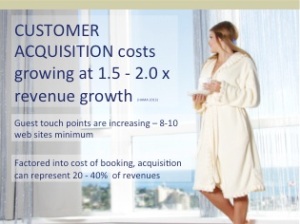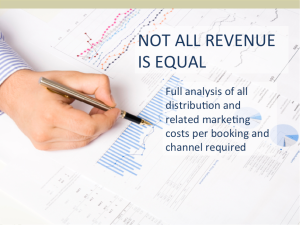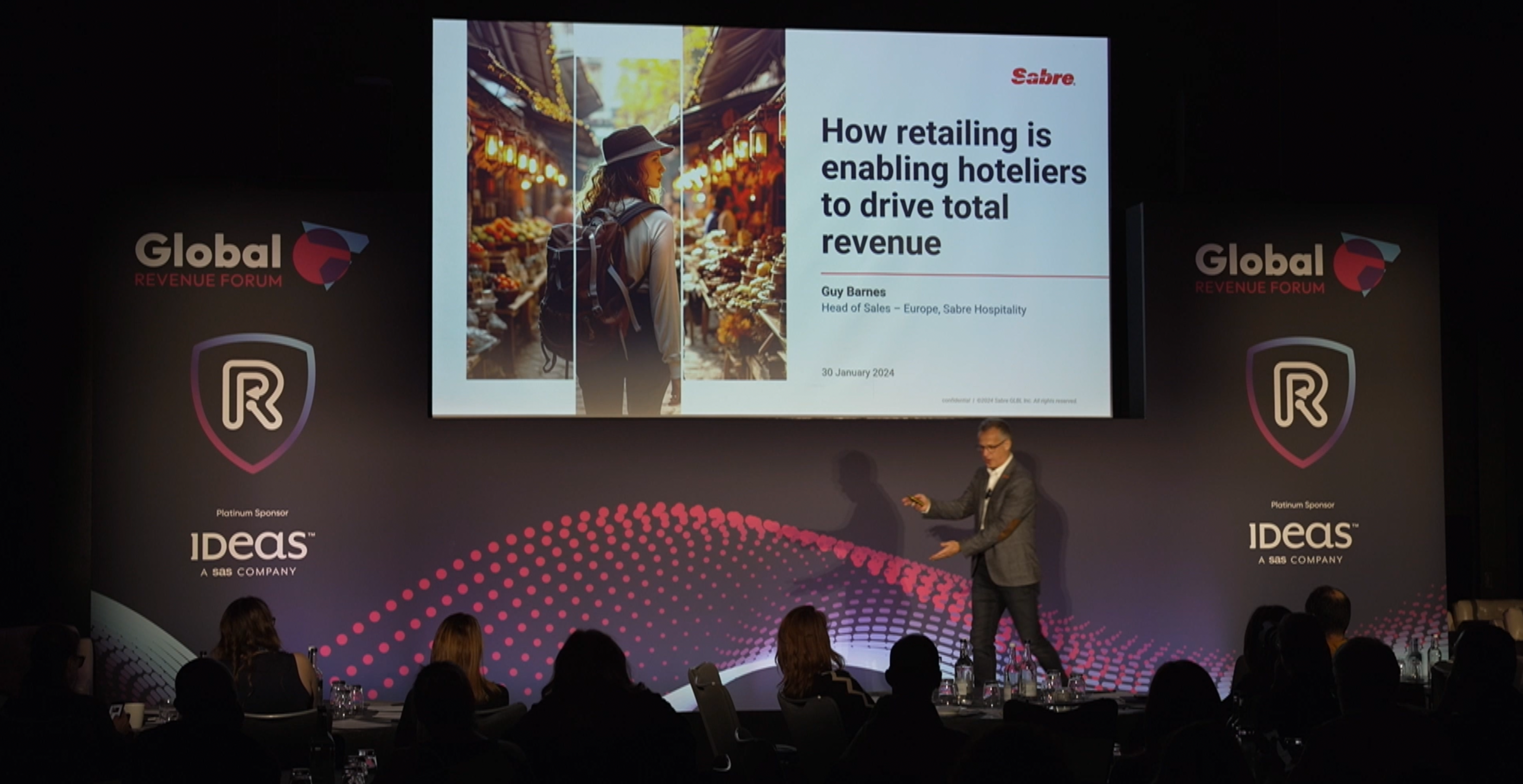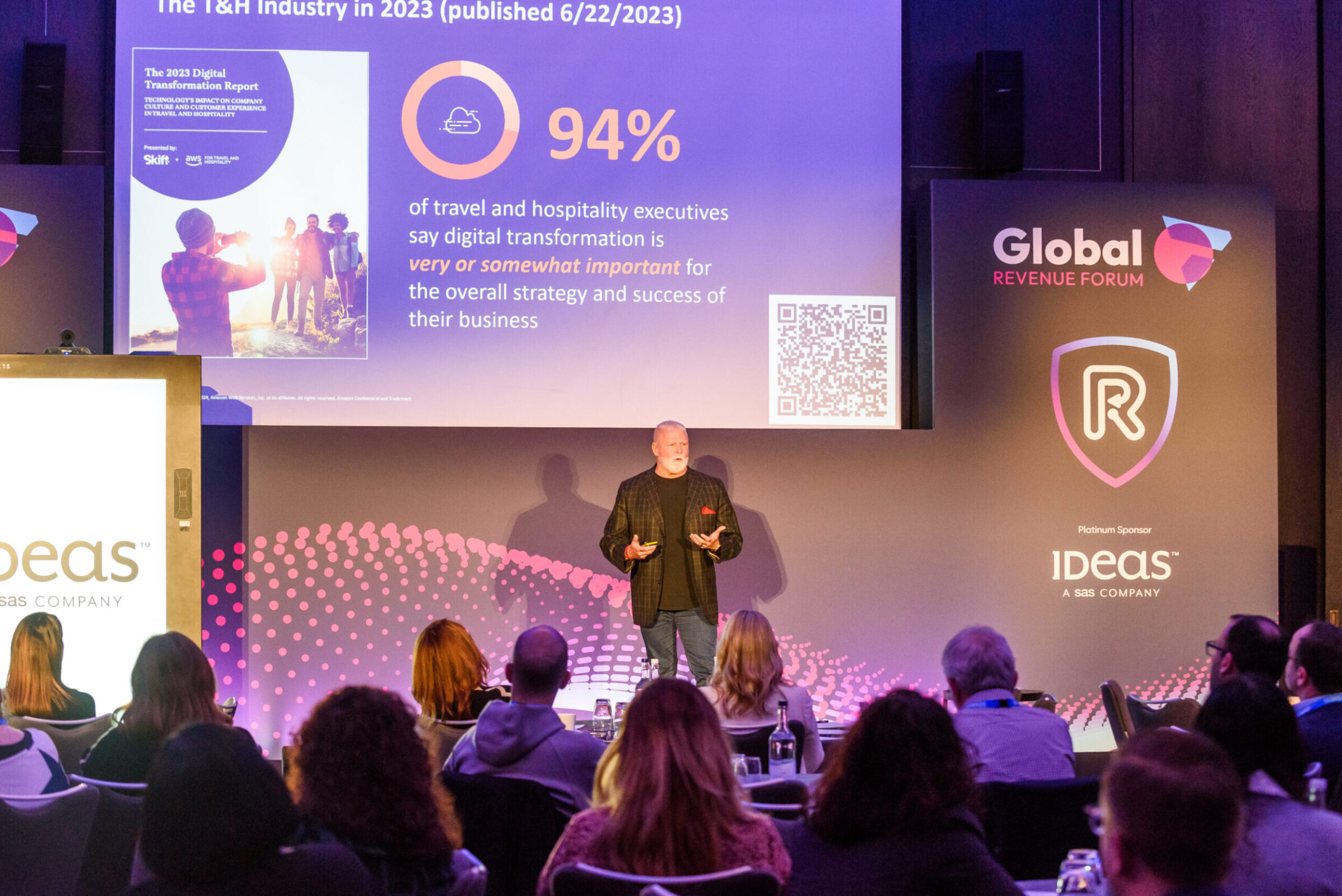A recent study by the Hotel Asset Management Association (HAMA) has shown that in the US the rate of growth of customer acquisition costs is outpacing the revenue growth 1.5 to 2 times.
Depending on whose study you read the number of web visits that guests use prior to making a booking is at minimum 8 and up to 25 sites if you count web sites used to support hotel decision making for a vacation. Event without these figures, we can all imagine the process; a search for your hotel on Google, a visit to TripAdvisor, a rate check on HotelFinder, checking out your nearby competition – for any hotel participating in PPC campaigns there is the potential to pick up costs at multiple web sites prior to the guest making it to your own site to make a booking. Factoring in these customer acquisition costs in addition to bookings fees and commissions means that between 20% and 40% of revenues are now down to cost of sale.
Top line measurements used frequently by revenue managers such as RevPAR are no longer robust enough to provide the visibility required to understand what is really going on in terms of revenue flow through to the bottom line. A revenue manager may be comfortably reaching and even outperforming on RevPAR targets, but that doesn’t mean the hotel is necessarily becoming more profitable, when cost of sale is continuously on the rise.
Additionally, the format of the hotel uniform lodging system of accounts doesn’t give a good insight into acquisition costs. The distribution landscape is far more complex than it was just a few years back, and whilst we can track commissions, there’s no clear way to track overall customer spend; monitoring net rated revenues is challenging and aligning associated marketing acquisition costs can be hugely complex.
So, in a world where third party cost of sales are spiraling, when you look at your own campaigns to build traffic to your web site, what you do to convert the traffic is key to optimising direct bookings, and controlling third party costs. Understanding where customers are in the buying cycle and which type of site they are more likely to visit at each stage gives a greater insight into conversion capability.
MetaSearch sites such as Trivago, Kayak, and TripAdvisor are now capturing customer attention at the research stage, and sending potential buyers off to one of the many sites that they merchandise. They service the customer well during this phase and it is in this pre-decision phase that customers are more likely to leap on and off a hotel web site. The MetaSearch sites currently hand off most of their pre-transactional customers to the sites that play in that space –including the major OTAS, such as Booking.com, Expedia.
Catching the customer closer in to the buying decision is central to a digital strategy; keeping that customer engaged and capturing the transaction is central to a revenue strategy. Having an understanding of your referral and attribution traffic and the customer buying phase at each point will ensure optimization of a digital campaign, the budget that you have, and therefore your revenue strategy. There are many well researched and proven techniques that you can action both on your site and in the booking engine, to ensure that the booking process is optimized from the moment a potential booker hits your site through to successfully completing a transaction.
Want to know more? We’re running a workshop on 14th October 2014 in London to review the tactics available to you. Join us – send a request through the form below, and we’ll do the rest.
[contact-form][contact-field label=’Name’ type=’name’ required=’1’/][contact-field label=’Email’ type=’email’ required=’1’/][contact-field label=’Please send me more info on the workshop’ type=’textarea’/][/contact-form]








